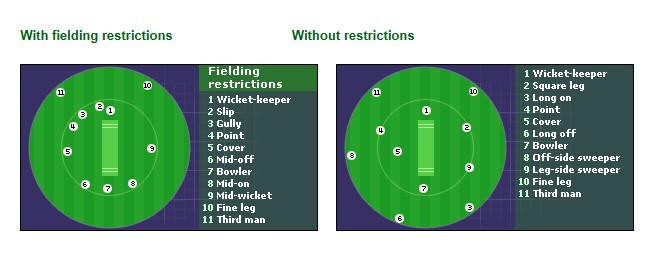Cricket Field Placement Strategies are vital for captains aiming to dominate matches and outthink the opposition. Setting the right field can influence the game’s outcome by controlling scoring areas, creating wicket-taking opportunities, and applying pressure on batsmen.
Successful captains study pitch conditions, bowlers’ strengths, and batsmen’s weaknesses to adjust their field placements dynamically. These strategies go beyond basic positions and require tactical thinking, experience, and an understanding of match situations.
Understanding Batsman Tendencies
One of the first steps in effective field placement is analyzing the batsman. Cricket Field Placement Strategies rely heavily on knowing whether a batsman favors attacking certain areas, is strong on the off-side, or struggles with deliveries in specific zones.
By positioning fielders in high-probability scoring regions, captains can restrict runs and force mistakes. Experienced teams often review past performances and adapt field setups accordingly, maximizing the effectiveness of their bowlers.
Tailoring Fields to Bowlers’ Strengths
Different bowlers require different field setups. Fast bowlers may benefit from attacking fields with slips and a gully to catch edges, while spinners often succeed with close-in fielders like short leg and silly point. Cricket Field Placement Strategies must align field positions with bowling styles to capitalize on strengths and exploit batsmen’s weaknesses.
Captains coordinate with bowlers to ensure comfort and confidence. The synergy between the bowler and the field placement can make a significant difference in creating pressure and inducing errors.
Adapting to Match Situations
Field placements are not static; they change with match scenarios. Cricket Field Placement Strategies must consider factors like the target score, overs remaining, and pitch behavior. Defensive fields may be needed to control run rate, while attacking fields are essential for taking quick wickets.
A proactive captain anticipates potential shots, plans for aggressive batsmen, and adjusts positions before the batsman executes a scoring opportunity. This dynamic approach is a hallmark of top-level cricket strategy.
Using the Boundary Wisely
Limiting boundaries is critical in modern cricket. Captains often employ deep field placements at long-on, long-off, and fine leg to prevent big hits. Cricket Field Placement Strategies incorporate strategic fielder placement to reduce the risk of sixes and fours while maintaining pressure on the batsman.
Balancing defensive and attacking positions requires constant observation, communication, and quick decision-making. A well-placed boundary fielder can turn a potentially costly shot into a dot ball or a wicket opportunity.
Creating Wicket-Taking Opportunities
Aggressive field setups are essential for taking wickets. Cricket Field Placement Strategies often include slips, gully, short leg, and other close-catching positions to exploit mistakes. Captains use these setups to pressure the batsman, force errors, and create chances for the bowler to capitalize.
Psychological pressure plays a major role. Bowlers feel supported by the field, and batsmen are often forced to adjust their natural game, leading to mistakes that result in wickets.
Observing Pitch and Weather Conditions
Effective field placement considers external conditions. Dry pitches, green surfaces, and overcast skies all influence ball movement and bounce. Cricket Field Placement Strategies adapt to these conditions, positioning fielders to take advantage of seam, swing, or spin.
Captains analyze pitch behavior throughout the match, adjusting placements to suit changes. This attention to detail ensures the team remains proactive rather than reactive.
Communicating with Players
Strong communication between the captain and fielders is essential. Cricket Field Placement Strategies require clear instructions on positions, responsibilities, and adjustments during the game. Fielders must understand their roles to execute plans effectively.
Encouraging feedback from fielders helps captains refine strategies, creating a collaborative environment where everyone contributes to match success.
Planning for Different Formats
Different formats of cricket demand unique fielding strategies. Test matches may require aggressive slips for early wickets, while limited-overs games need innovative placements to curb boundaries. Cricket Field Placement Strategies evolve with the format, ensuring the captain adapts tactics appropriately.
Successful captains anticipate the batsmen’s approach in each format, deploying fielders to maximize efficiency and impact throughout the innings.
Monitoring Batsman Adjustments
Top captains constantly monitor how batsmen adapt to field placements. Adjusting fields mid-over, switching a fielder from leg-side to off-side, or bringing in catchers for attacking shots are all part of Cricket Field Placement Strategies.
Observing and reacting in real-time allows captains to stay ahead, disrupt the batsman’s rhythm, and create new wicket-taking opportunities.
Learning from Professionals
Watching professional matches provides insight into advanced fielding setups. Captains can study how elite teams implement Cricket Field Placement Strategies, learning patterns, traps, and setups that consistently succeed at high levels.
Real-life examples from international cricket demonstrate how thoughtful fielding can change the momentum of a game. Applying these insights helps captains enhance their tactical awareness and leadership on the field.
Read also:
new zealand women’s national cricket team vs pakistan women’s national cricket team match scorecard
west indies cricket team vs pakistan national cricket team match scorecard
mi cape town vs joburg super kings match scorecard
vidarbha cricket team vs mumbai cricket team stats
maharashtra cricket team vs baroda cricket team players
vidarbha cricket team vs kerala cricket team stats
